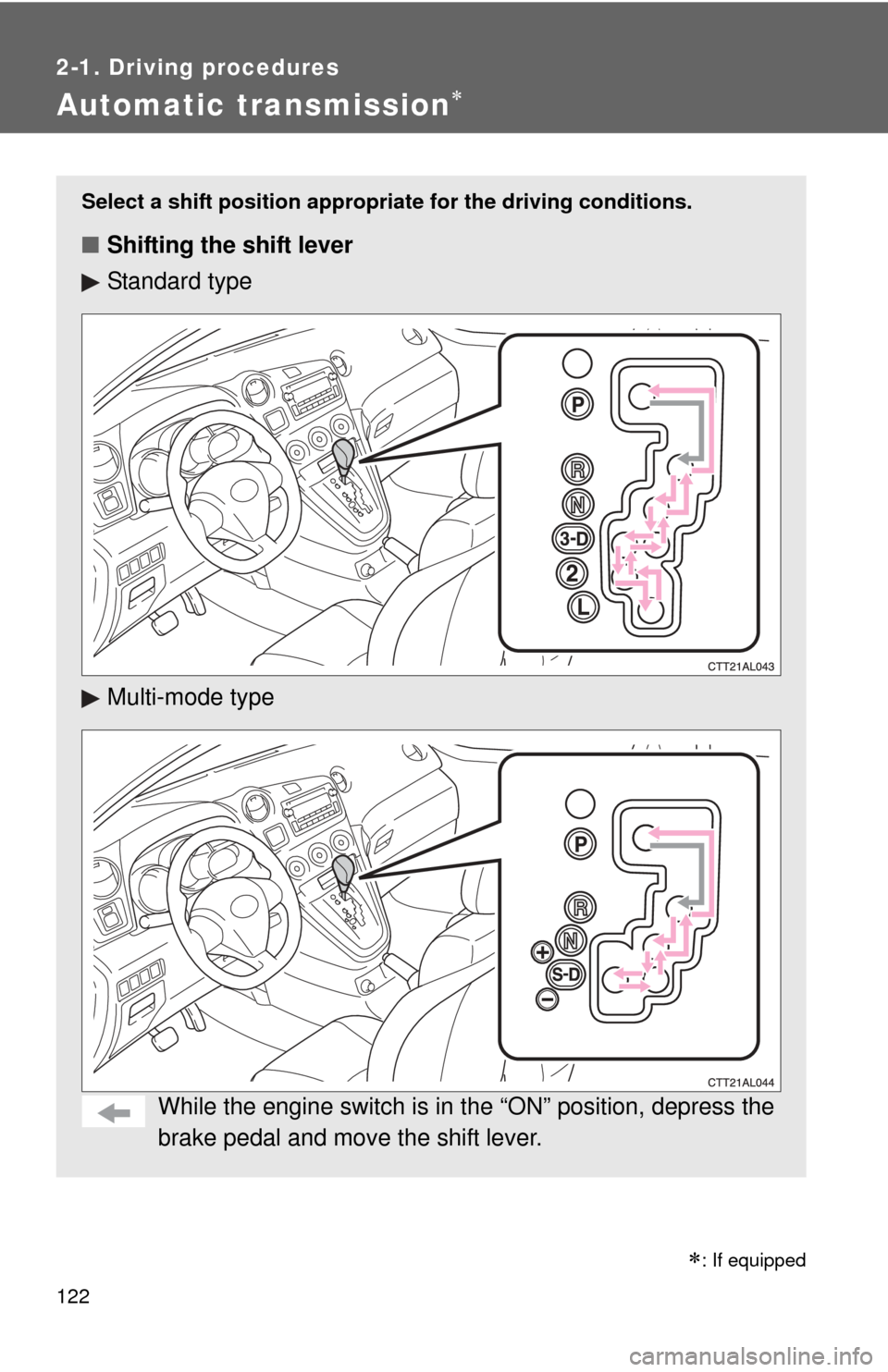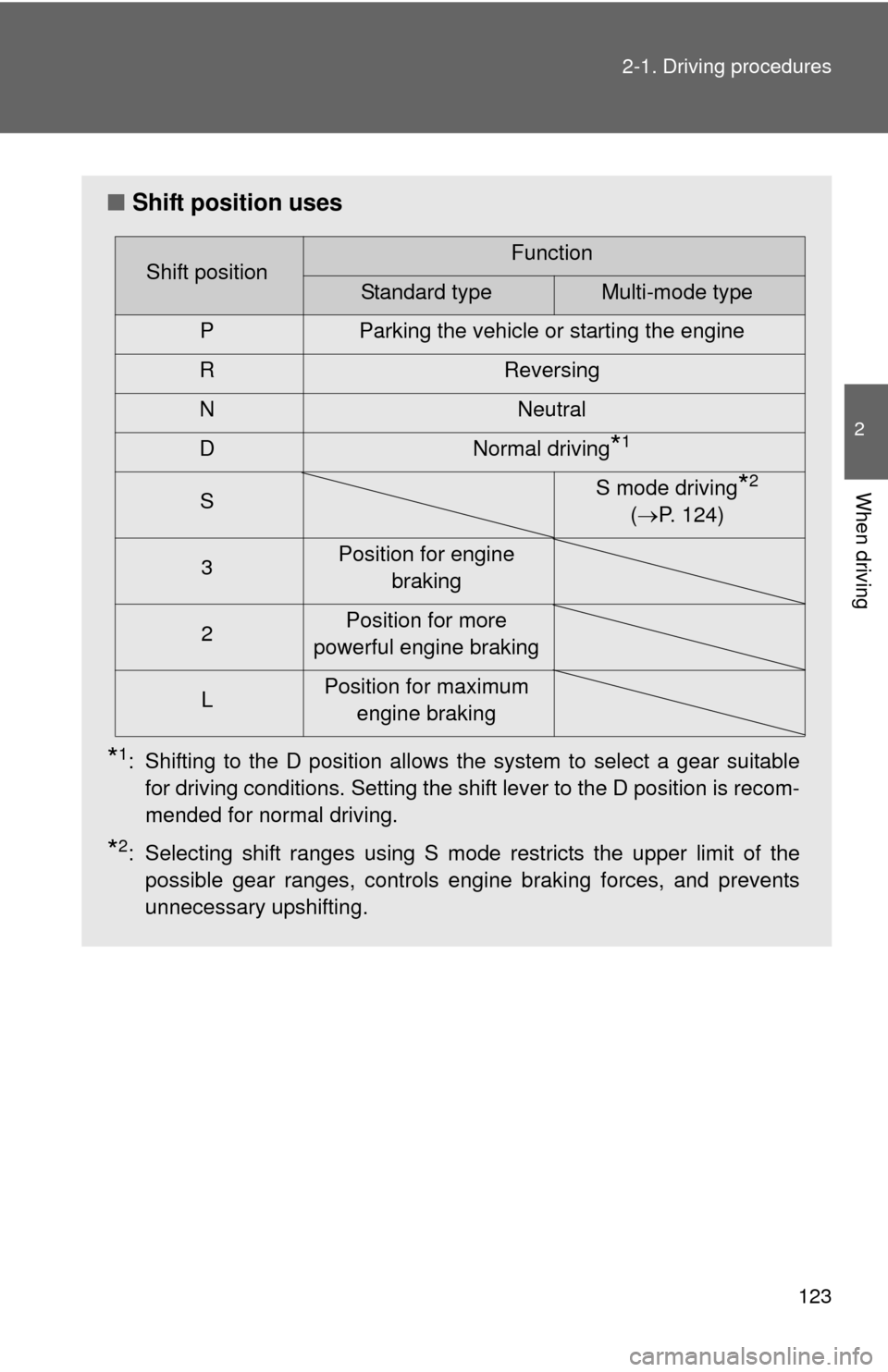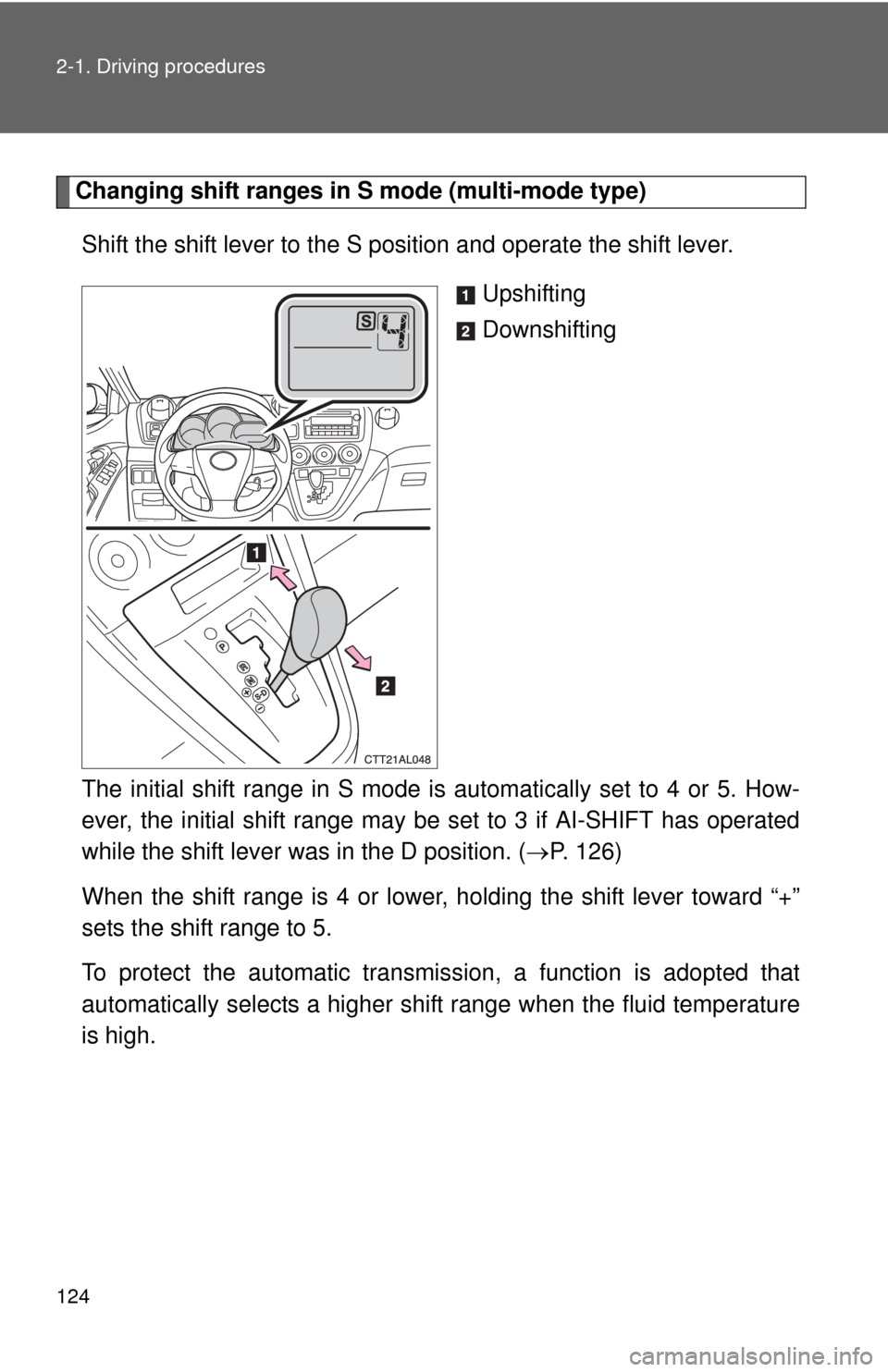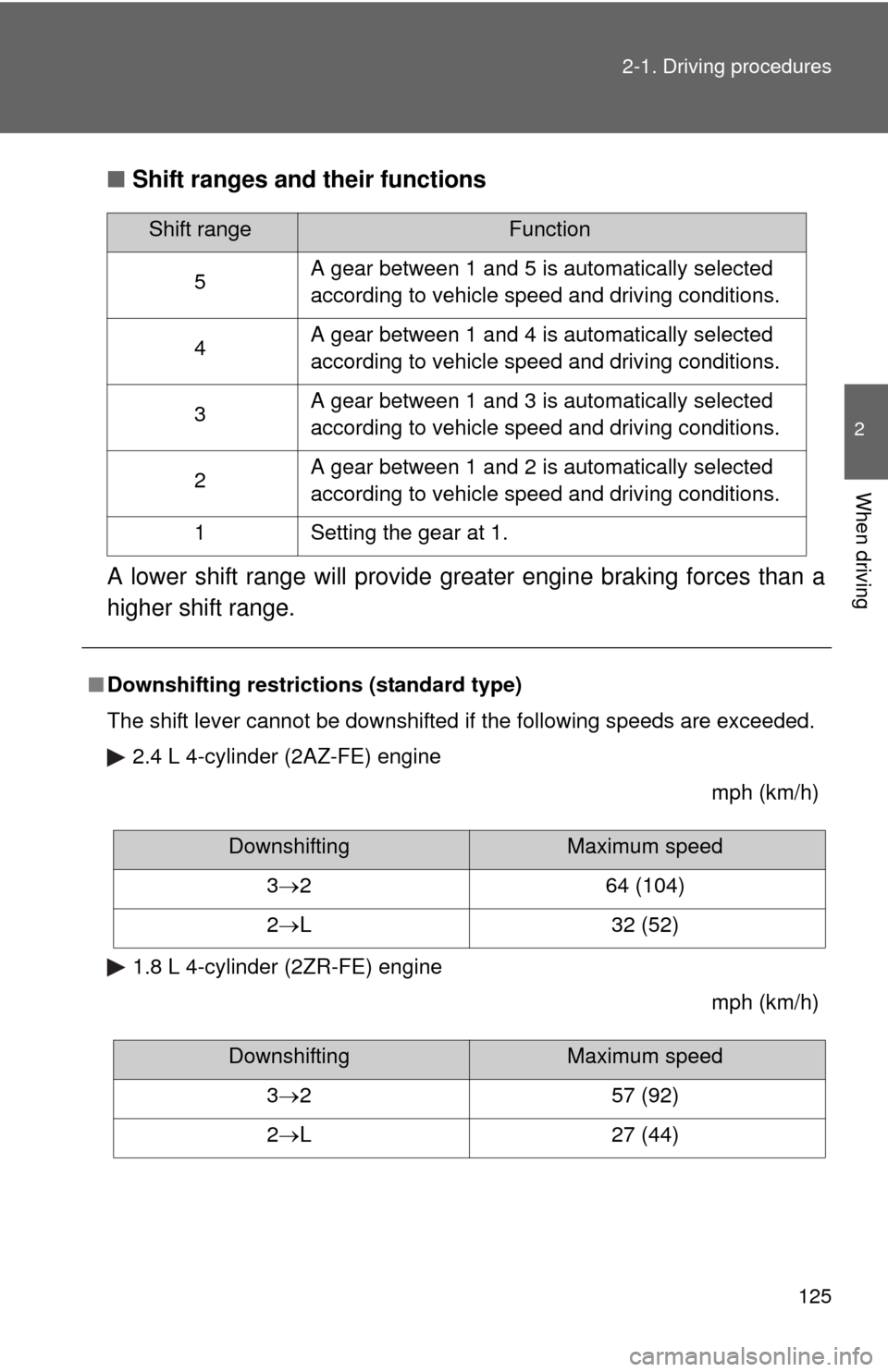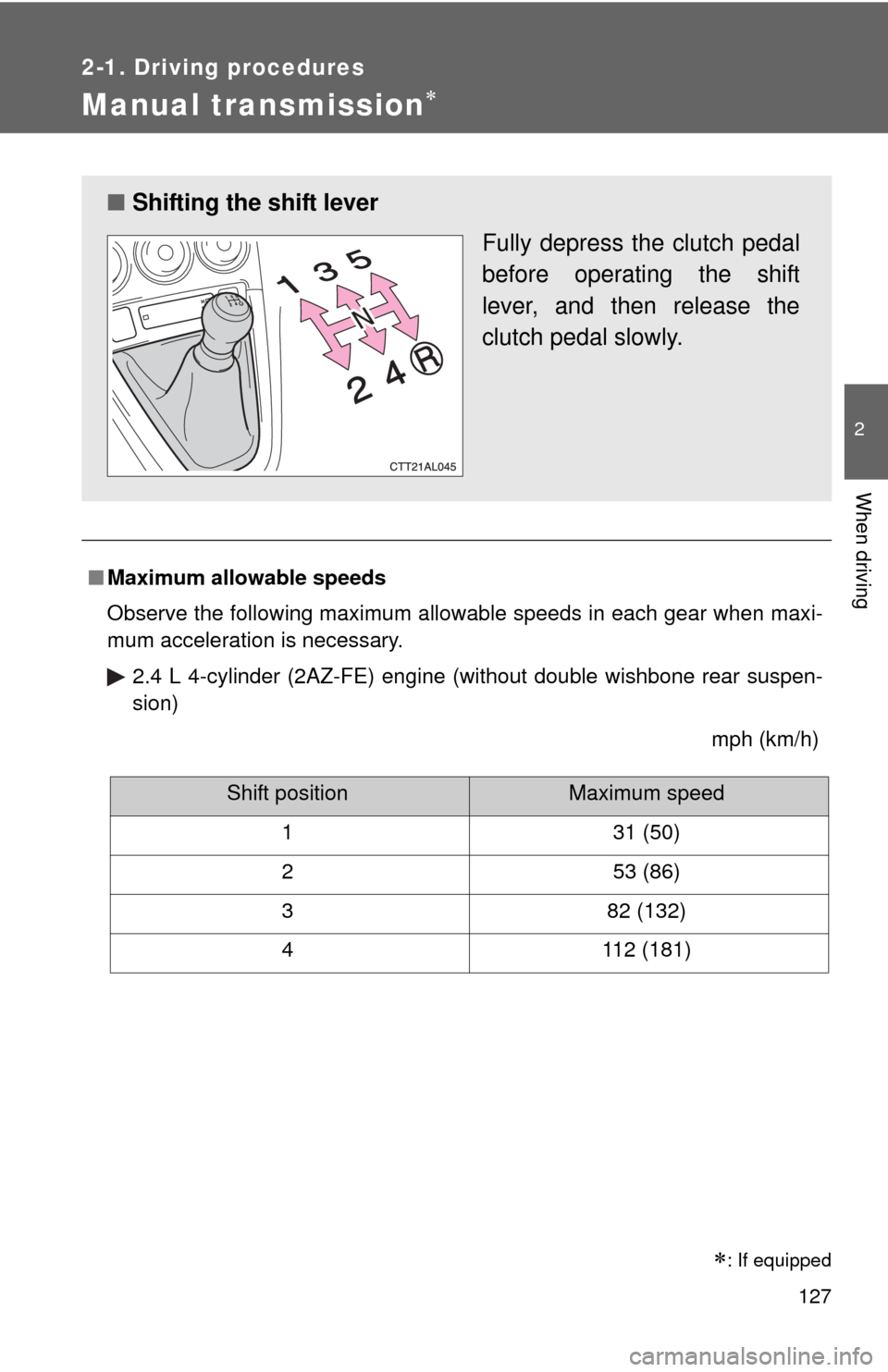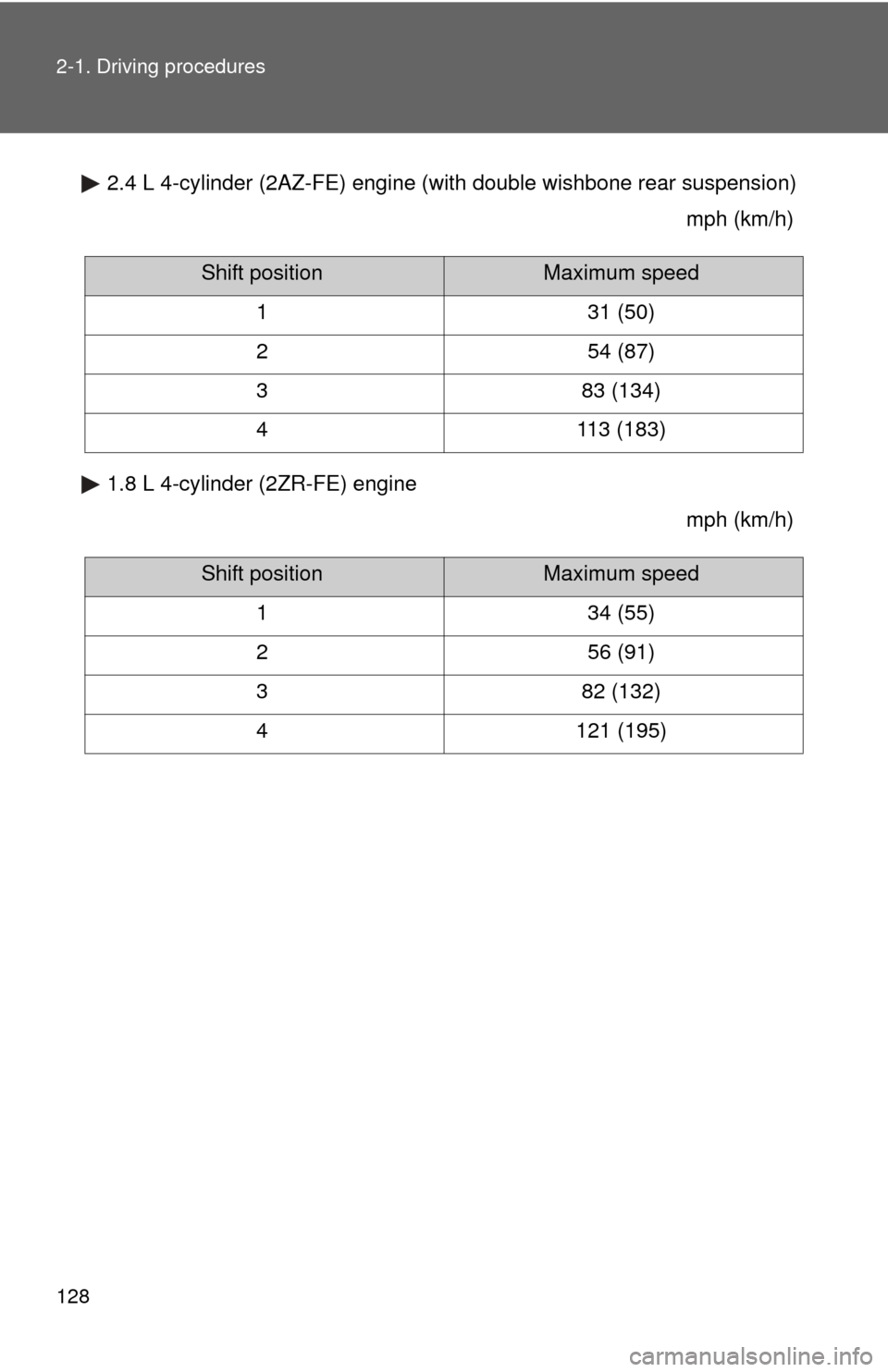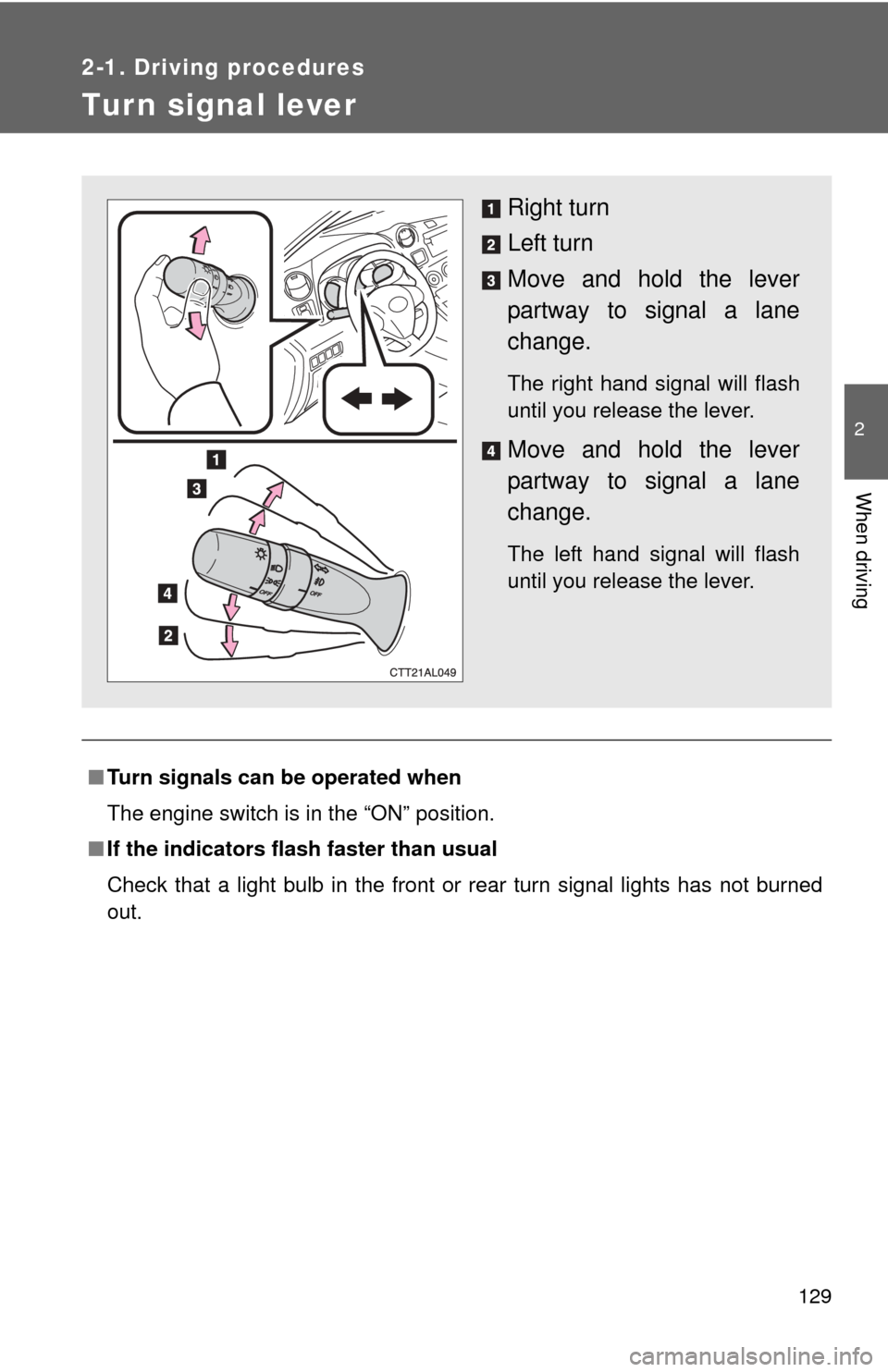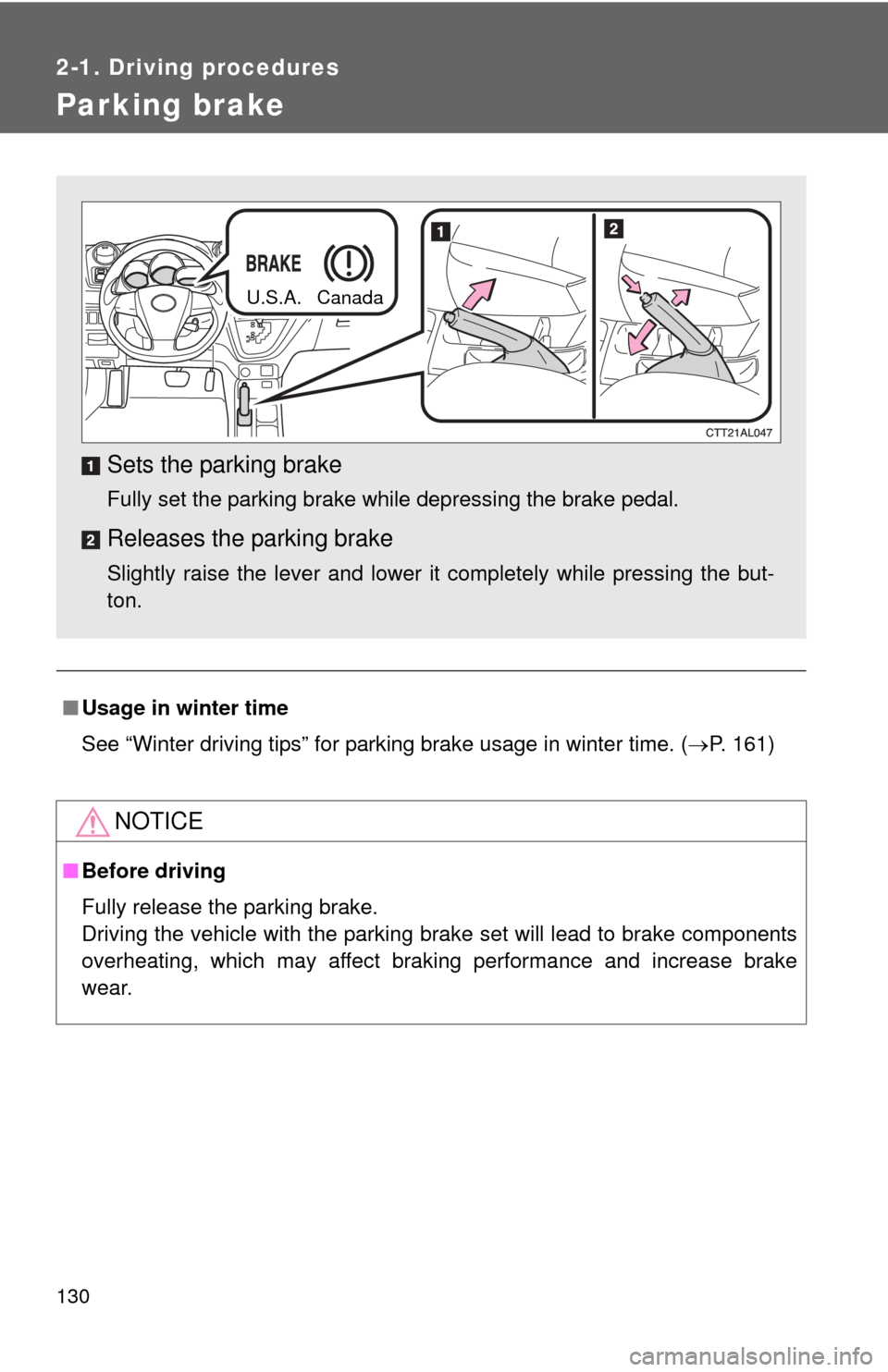TOYOTA MATRIX 2012 E140 / 2.G Owners Manual
MATRIX 2012 E140 / 2.G
TOYOTA
TOYOTA
https://www.carmanualsonline.info/img/14/6541/w960_6541-0.png
TOYOTA MATRIX 2012 E140 / 2.G Owners Manual
Trending: tire pressure reset, fuel type, jump start terminals, child seat, ECU, belt, ECO mode
Page 121 of 516
121
2-1. Driving procedures
2
When driving
NOTICE
■
To prevent battery discharge
Do not leave the key in the “ACC” or “ON” position for long periods if the
engine is not running.
■ When starting the engine
●2.4 L 4-cylinder (2AZ-FE) engine Do not crank for more than 30 sec-
onds at a time. This may overheat the starter and wiring systems.
● Do not race a cold engine.
● If the engine becomes difficult to start or stalls frequently, have the engine
checked immediately.
Page 122 of 516
122
2-1. Driving procedures
Automatic transmission
Select a shift position appropriate for the driving conditions.
■Shifting the shift lever
Standard type
Multi-mode type
While the engine switch is in the “ON” position, depress the
brake pedal and move the shift lever.
�
: If equipped
Page 123 of 516
123
2-1. Driving procedures
2
When driving
■
Shift position uses
*1: Shifting to the D position allows the system to select a gear suitable
for driving conditions. Setting the shift lever to the D position is recom-
mended for normal driving.
*2: Selecting shift ranges using S mode restricts the upper limit of thepossible gear ranges, controls engine braking forces, and prevents
unnecessary upshifting.
Shift positionFunction
Standard typeMulti-mode type
P Parking the vehicle or starting the engine
R Reversing
N Neutral
D Normal driving
*1
S S mode driving*2
( P. 124)
3 Position for engine
braking
2 Position for more
powerful engine braking
L Position for maximum
engine braking
Page 124 of 516
124 2-1. Driving procedures
Changing shift ranges in S mode (multi-mode type)Shift the shift lever to the S position and operate the shift lever. Upshifting
Downshifting
The initial shift range in S mode is automatically set to 4 or 5. How-
ever, the initial shift range may be set to 3 if AI-SHIFT has operated
while the shift lever was in the D position. ( P. 126)
When the shift range is 4 or lower, holding the shift lever toward “+”
sets the shift range to 5.
To protect the automatic transmis sion, a function is adopted that
automatically selects a higher shift range when the fluid temperature
is high.
Page 125 of 516
125
2-1. Driving procedures
2
When driving
■
Shift ranges and their functions
A lower shift range will provide greater engine braking forces than a
higher shift range.
■ Downshifting restrictions (standard type)
The shift lever cannot be downshifted if the following speeds are exceeded.
2.4 L 4-cylinder (2AZ-FE) engine
mph (km/h)
1.8 L 4-cylinder (2ZR-FE) engine mph (km/h)
Shift rangeFunction
5 A gear between 1 and 5 is automatically selected
according to vehicle speed and driving conditions.
4 A gear between 1 and 4 is automatically selected
according to vehicle speed and driving conditions.
3 A gear between 1 and 3 is automatically selected
according to vehicle speed and driving conditions.
2 A gear between 1 and 2 is automatically selected
according to vehicle speed and driving conditions.
1 Setting the gear at 1.
DownshiftingMaximum speed
3 2 64 (104)
2 L 32 (52)
DownshiftingMaximum speed
3 2 57 (92)
2 L 27 (44)
Page 126 of 516

126 2-1. Driving procedures
■Downshifting restrictions warning bu zzer (S mode in multi-mode type)
To help ensure safety and driving performance, downshifting operation may
sometimes be restricted. In some circumstances, downshifting may not be
possible even when the shift lever is operated. (The warning buzzer will
sound twice.)
■ When driving with the cruise control system (if equipped)
Standard type
Engine braking will not operate, even when downshifting to 3. ( P. 148)
Multi-mode type
Engine braking will not operate in the S mode, even when downshifting to 4.
( P. 148)
■ If the shift lever cannot be shifted from P
P. 439
■ If the “S” indicator does not come on even after shifting the shift lever
to S (multi-mode type)
This may indicate a malfunction in the automatic transmission system. Have
the vehicle inspected by your Toyota dealer immediately.
(In this situation, the transmission will operate in the same manner as when
the shift lever is in D.)
■ AI-SHIFT
AI-SHIFT automatically selects the suitable gear according to driver perfor-
mance and driving conditions.
Standard type
AI-SHIFT automatically operates when the shift lever is in the D position. Multi-mode type
AI-SHIFT automatically operates when the shift lever is in the D position.
(Shifting the shift lever to the S position cancels the function.)
Page 127 of 516
127
2-1. Driving procedures
2
When driving
Manual transmission
■Maximum allowable speeds
Observe the following maximum allowable speeds in each gear when maxi-
mum acceleration is necessary.
2.4 L 4-cylinder (2AZ-FE) engine (without double wishbone rear suspen-
sion) mph (km/h)
■Shifting the shift lever
Fully depress the clutch pedal
before operating the shift
lever, and then release the
clutch pedal slowly.
: If equipped
Shift positionMaximum speed
1 31 (50)
2 53 (86)
3 82 (132)
4 112 (181)
Page 128 of 516
128 2-1. Driving procedures
2.4 L 4-cylinder (2AZ-FE) engine (with double wishbone rear suspension)mph (km/h)
1.8 L 4-cylinder (2ZR-FE) engine mph (km/h)
Shift positionMaximum speed
1 31 (50)
2 54 (87)
3 83 (134)
4 113 (183)
Shift positionMaximum speed
1 34 (55)
2 56 (91)
3 82 (132)
4 121 (195)
Page 129 of 516
129
2-1. Driving procedures
2
When driving
Tur n signal lever
■Turn signals can be operated when
The engine switch is in the “ON” position.
■ If the indicators flash faster than usual
Check that a light bulb in the front or rear turn signal lights has not burned
out.
Right turn
Left turn
Move and hold the lever
partway to signal a lane
change.
The right hand signal will flash
until you release the lever.
Move and hold the lever
partway to signal a lane
change.
The left hand signal will flash
until you release the lever.
Page 130 of 516
130
2-1. Driving procedures
Parking brake
■Usage in winter time
See “Winter driving tips” for parking brake usage in winter time. ( P. 161)
NOTICE
■Before driving
Fully release the parking brake.
Driving the vehicle with the parking brake set will lead to brake components
overheating, which may affect braking performance and increase brake
wear.
Sets the parking brake
Fully set the parking brake while depressing the brake pedal.
Releases the parking brake
Slightly raise the lever and lower it completely while pressing the but-
ton.
U.S.A. Canada
Trending: emergency towing, spare tire, change time, fog light, fuel pump, door lock, ABS

